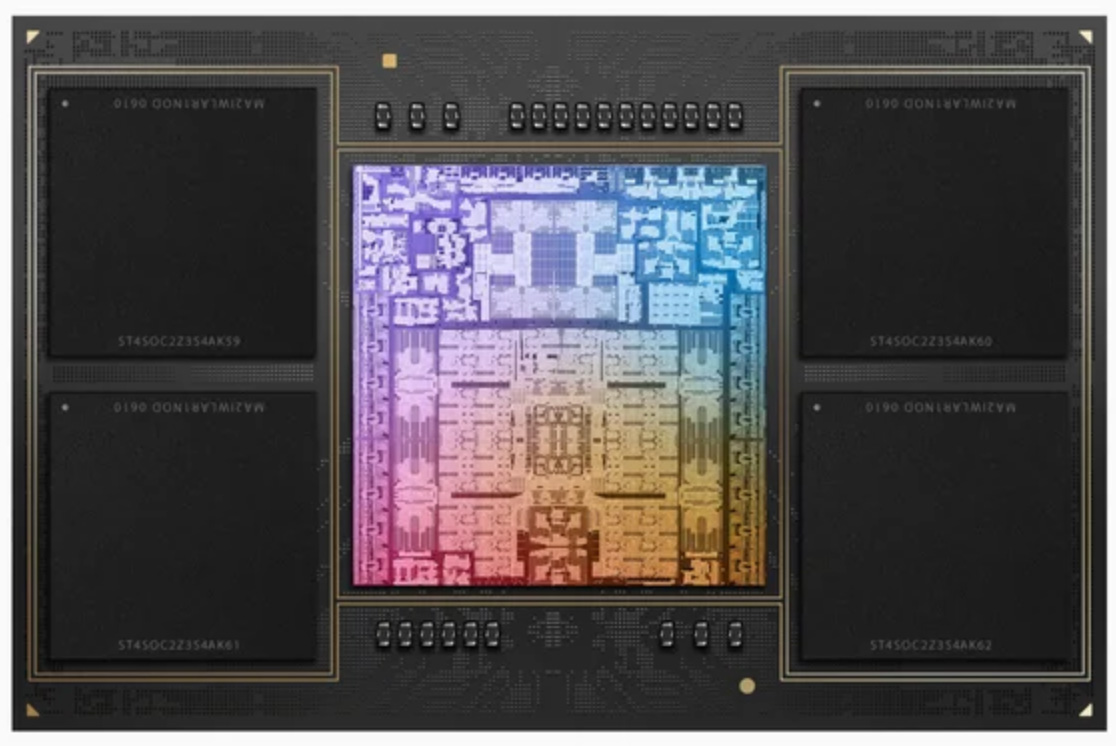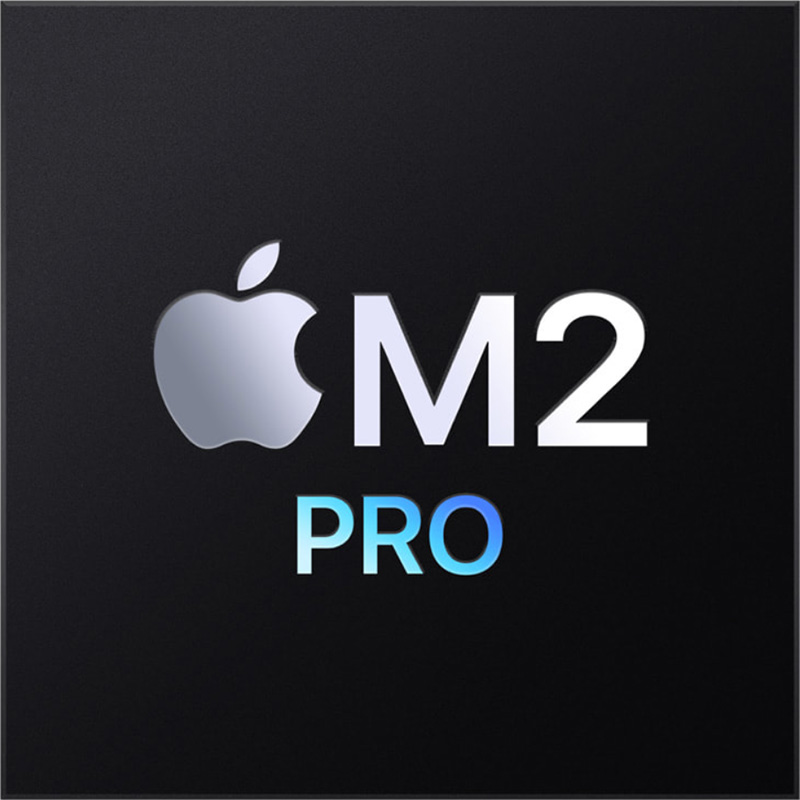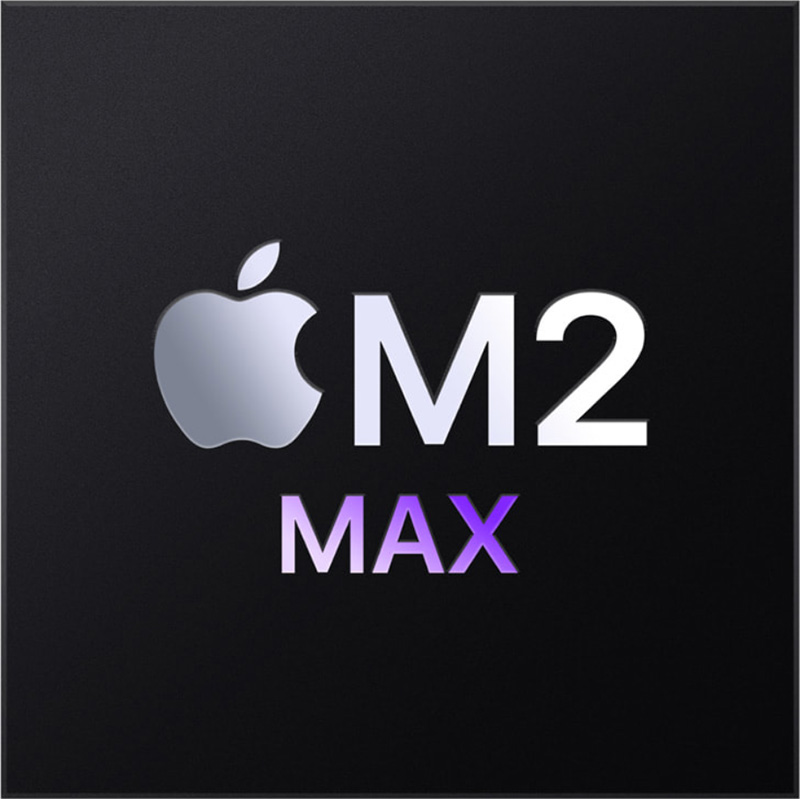 [ Updated July 9, 2023, to reflect recent testing of an M2 Max Mac Studio and the release of the M2 Ultra SoC. ]
[ Updated July 9, 2023, to reflect recent testing of an M2 Max Mac Studio and the release of the M2 Ultra SoC. ]
Using computers for video production and editing no longer requires state-of-the-art hardware. That is a hard sentence to write, but it is most certainly true.
For more than two decades recording, editing, and playing digital video on a computer took the fastest hardware available – and then some. But no longer. Today, virtually any computer or mobile device can play and record video. While not all of them edit video equally well, even editing has become commonplace on most devices.
We only need to scroll through endless Facebook pages to realize that videos are ubiquitous.
This is not to say that, when it comes to professional work, faster computers or larger storage are not necessary. But, unlike the early years of this century where meeting the demands of video editors required Apple to keep improving its technology, those days are gone.
The state-of-the-art has moved on to other areas of computing.

All images courtesy: Apple, Inc.
When Apple silicon chips are described as simultaneously playing almost 20 streams of 8K ProRes video, you know that this hardware is more than adequate for virtually every filmmaker. That, I suspect, is why Apple no longer uses Final Cut Pro when showcasing new chips. Once a chip is fast enough, there’s not a whole lot new to show. (I mean, really, how often are you streaming more than a dozen 8K ProRes video clips in an edit?)
Instead, Apple highlights software for 3D modeling, Photoshop rendering, or compiling code. Today’s computers are more than fast enough for video editing.
REVIEWS
The new M2 family of chips are exciting. They edit smoother, render faster and output more quickly than any other system. Faster than an M1 system and DRAMATICALLY faster than Intel gear.
For example, I was editing a recent webinar, which used ProRes 4444 for source files. I recently souped-up my MacBook Pro system, running an M1 Pro SoC, with an SSD RAID. I was seeing render speeds up to 900 MB/second. Exports were running around 350 MB/second. Editing was smooth and I didn’t need to render to see most effects.
The system was a delight. Then I bought a new M2 Mac Studio and discovered it was even faster!
Given that, here are my thoughts on hardware as you look to upgrade your system. You can spend as much as you want – but you don’t need the top-of-the-line to get your work done.

THOUGHTS ON WHAT TO BUY
Intel Systems
If you are still on an Intel system, at some point you’ll need to upgrade to Apple silicon. There are already features that only run on newer systems. This is not to say that your existing Intel gear is no good, simply that you’ll benefit from the newer hardware. The speed benefits are dramatic and instantaneous.
When you do, keep your existing Intel gear and don’t upgrade it. That way, you have an older system to refer to when you need to open an older project.
 M2 – M2 Pro – M2 Max – M2 Ultra
M2 – M2 Pro – M2 Max – M2 Ultra
When the Mac Studio was announced, I realized that, for video editing, the M1 Max was more than sufficient. Yes, the M1 Ultra was faster, but the M1 Max did everything we needed for virtually all editing – even that atypical 8K job.
The same reasoning applies to the M2 family. The M2 Ultra is amazing, but, as video editors we don’t need it.
Based on what I read, the specs of the M2 Max are only slightly less powerful than the M1 Ultra. And based on my tests, the M2 Max edits every form of video up to 12K at 60 fps and supports dozens of 4K multicam streams! You don’t need the M2 Ultra to get your work done.
The big differences between the M2, M2 Pro, M2 Max and M2 Ultra are memory bandwidth (100, 200, 400 or 800 GB/s), total RAM, media engines (1 vs. 2) and Thunderbolt ports (4, 6, or 8). The media engines support HEVC, H.264 and ProRes encoding and decoding.
NOTE: Cinema style editing benefits from the single media engine. Multicam editing will benefit from the second media engine in the M2 Max/Ultra. However, in either case, if your media is not HEVC, H.264 or ProRes, having a media engine won’t make any difference. Switching to optimizing media or creating ProRes proxies will benefit from the speed of this built-in media engine.
CPU core counts are the same for both M2 Pro and M2 Max chips. The CPU is used for managing the interface, importing clips, editing tools and timeline, positioning and scaling clips. The GPUs are used to change the look of pixels. For example, dissolves, color grading and effects renders.
Both the M2 Pro and M2 Max are more than sufficient for 4K (and smaller frame size) editing. Both are more than sufficient for multicam editing (provided your storage is fast enough). Larger multicam projects with larger frame sizes will benefit from using the M2 Max.
For multicam editing, the gating factor isn’t the CPU, it’s the size and speed of your storage. For any multicam editing of more than a few streams, an SSD RAID is essential.
 CPU & GPU Cores
CPU & GPU Cores
Based on watching Activity Monitor during an edit, I have not seen where any software – Final Cut, Premiere, or DaVinci – maxes out CPU or GPU core usage of an M-series system.
Remember, regardless of the number of GPU cores, the image quality is the same. More cores gets you more speed – assuming that all cores are fully involved. What I’ve seen, however, is that many cores are not busy during render or output.
RAM
My current 16″ MacBook Pro has 32 GB of RAM and I’ve had zero problems editing. What extra RAM gets you is more file cacheing. That is, portions of clips are loaded into RAM, which makes access during editing faster. However, if you store files on the internal drive of your Mac, or an external SSD, that storage is SO fast that cacheing has only limited benefits. If you are using spinning media, you’ll benefit from more RAM. But, if you are using internal or external SSD storage, the benefits of cacheing are reduced.
My recommendation is to get a system with 32 or 64 GB of RAM. You can get more, but you won’t see a boost in performance.

Storage
Apple charges a ridiculous amount for internal SSD storage. More storage is good, however, you need to balance the cost of internal vs. external storage.
Most video projects today require multiple terabytes of storage. This means that, in most cases, you’ll need to add storage to your system.
I recently upgrading my main editing system to an M2 Mac Studio, which currently has:
Adding the SSD RAID made a big improvement in the responsiveness of my system.
My recommendation is an editing system with 1 – 2 TB of internal storage.
Other Options
I am very grateful that Apple added more ports to their hardware. That simplifies my life a lot – especially on the road. However, I’ve also found the CalDigit TS-4 dock to be extremely useful with its 13 ports of connectivity.
A 10G Ethernet connector provides faster access to servers, provided your network is configured to support the faster speed.
And while smaller screens travel more easily, I find larger screens more helpful in video editing simply because the interface is easier to see and work with.
SUMMARY
Digital video no longer requires state-of-the-art hardware. We no longer need the biggest, fastest, most powerful system to get our work done. Rather, these latest systems continue to get faster which means that we continue to save time in getting our work done.
But we don’t need to spend extra money to get the top-of-the-line. The very best no longer makes a significant difference in how long it takes to get our work done. A mid-range choice is fine.
Just my thoughts.
94 Responses to How to Configure M2 Macs for Video Production and Editing
← Older Comments-
 Jay says:
Jay says:
September 5, 2023 at 8:01 pm
-
 Larry says:
Larry says:
September 5, 2023 at 8:49 pm
-
 Jay says:
Jay says:
September 6, 2023 at 7:30 am
-
 Larry Jordan says:
Larry Jordan says:
September 6, 2023 at 8:37 am
-
 Jay says:
Jay says:
September 6, 2023 at 12:05 pm
-
 Larry says:
Larry says:
September 6, 2023 at 1:51 pm
-
 Neel says:
Neel says:
October 8, 2023 at 11:54 pm
-
 David says:
David says:
September 19, 2023 at 12:58 pm
-
 Larry says:
Larry says:
September 19, 2023 at 1:06 pm
-
 JD Hunt says:
JD Hunt says:
October 7, 2023 at 8:01 am
-
 Larry says:
Larry says:
October 7, 2023 at 8:37 am
-
 JD Hunt says:
JD Hunt says:
October 7, 2023 at 8:48 am
-
 Andy Irwin says:
Andy Irwin says:
October 17, 2023 at 7:37 am
-
 Larry says:
Larry says:
October 17, 2023 at 7:40 am
-
 Elizabeth says:
Elizabeth says:
October 27, 2023 at 10:13 am
-
 Larry says:
Larry says:
October 27, 2023 at 10:44 am
-
 Elizabeth says:
Elizabeth says:
October 27, 2023 at 10:58 am
-
 Nick says:
Nick says:
February 5, 2024 at 12:57 am
-
 Larry says:
Larry says:
February 5, 2024 at 5:28 am
← Older CommentsHi Larry,
Thank you for this excellent article!
I am stuck between deciding on a MacBook pro M2 Max 12 core CPU 38 core GPU(32 GB RAM) and M2 Max Studio 12 core CPU,30 core GPU (64 GB RAM).
I am an editor and assistant editor. MacBook pro offers mobility(in case I move to another city for a project) and studio is more powerful and future proof. I edit short form( i haven’t came across anything higher than 6K so far)
I was wondering if getting a MacBook pro is a good idea? how much longevity we can except from a MacBook pro, If that is the only editing machine I have? If you could throw some insight in to this would be really great.
Thank you!
Jay
Jay:
Thanks for your questions. Actually the choice isn’t that hard:
* If you need portability, get the MacBook Pro M2 Max
* If you need more power, better heat management, more ports, more RAM, and the ability to add monitors, get the Mac Studio M2 Max
Both of these are MORE!!! than powerful enough for your work and will last for many years to come. As for life expectancy, I would expect both to last close to a decade.
Larry
Thank you very much Larry for your quick response! greatly appreciated. I have two more questions,
1)How feasible is connecting ethernet to MacBook Pro using a docking station? I have a 1000 MBPS internet connection. If I am going macbook way I am thinking of getting a Microsoft surface Thunderbolt 4 dock or Caldigit TS4 Thunderbolt Dock both have 2.5Gbit/s ethernet port. Will it gives me maximum internet speed which my network provides?
2) Does connecting multiple monitors to MacBook pro slow it down the and affects the performance?
I wanted to express my gratitude once more for the fantastic article and your prompt response. In just one article, I found answers to many questions I had been searching for over the past week. Thank you!
Jay:
For clarity, I think you have a 1,000 Mbps Internet connection, not 1,000 MBps -unless you are spending a ton of money and have a fiber connection. As such, 1,000 Mbps (also called 1G) transfers data around 125 MB/sec.
While you can add a dock – and I own and am a huge fan of the CalDigit TS4 – the 2.5 Gbps connection on the dock won’t give you more speed than the 1G connection in the MacBook. Rather, I view the dock as a port extender with the ability to easily add more monitors.
And, no, connecting multiple monitors doesn’t appreciably slow it down. I haven’t done formal tests, but nothing I’ve read or experienced indicates a performance hit.
Larry
Hi Larry,
Thank you for your response! YesI have a 1000 Mbps connection not 1000 MBPS, sorry for the confusion.
I’m seeking confirmation that connecting a 1000 Mbps Ethernet cable to the MacBook Pro via a CalDigit Thunderbolt dock or a similar device with a 2.5 Gbps Ethernet port should not result in a significant difference in upload and download speeds, correct? Currently, with my iMac (2015 model), I consistently achieve speeds of 800-900 Mbps (upload and download). Will I get the same upload and download speed in a Macbook Pro if ethernet cable is connected through a dock?
Regards,
Jay
Jay:
In answer to your last question, file transfer speed is dependent upon a number of factors – congestion, file size, transfer software, background processes – and almost never runs at full speed all the time.
That being said, connecting a 1G Internet connection to a 2.5 G dock won’t slow things down in any way.
Larry
Adobe software seems to be having problems on Apple M2 chip.
https://community.adobe.com/t5/creative-cloud-desktop-discussions/m2-mac-compatibility/td-p/13650499
___more specific problems with Premiere…
https://community.adobe.com/t5/premiere-pro-discussions/latest-update-not-importing-my-mp4-files-correctly/m-p/13866774
The 38-core gpu option in the M2 Max Studio is rarely competently discussed by anybody. I have gathered it might provide some minor advantages in gaming but does it offer anything to a multicam video editor (for me Premiere slowly transitioning to DaVinci and from 1080 to 4k)? Or should I spring instead for 64GB Ram and/or a 2TB (instead of a 1TB) ssd?
David:
Based on my tests with the 30-core GPU, there are very few functions within any software (Premiere / FCP / Compressor / Media Encoder ) that fully max out the GPU. There are some, but not many. Rather than investing in more GPUs, which, at best will provide a 10-20% speed bump for color grading or export, you are MUCH! better off upgrading to 64 GB of RAM – though 96 and above are more than you need – and/or a 2 TB drive. 64 GB of RAM will be VERY valuable for multicam editing, especially at 4K frame sizes and larger.
Multicam requires CPU horsepower; so do larger frame sizes. GPUs are required when changing the look of a pixel. So more GPUs won’t help multicam editing at all. GPUs are used for color grading and media compression. Important tasks, but not as valuable as more RAM or larger storage.
Hope this helps.
Larry
Thanks for the great info, Larry. I currently work on a 16-inch M2 Max 38 core gpu with 32gb memory and a 1tb HD. I edit in Resolve primarily in Blackmagic 6K raw and some Arri. It’s super smooth and have no complaints. I keep all of my footage on external SSD drives, like the G-Technology or Samsung T-7. The longest project to date has been a 90-minute indie film, which managed to use about 300gb of the internal SSD for the cache, etc. I’m going to buy a Mac Studio with the M2 Ultra and I feel I can keep the SSD at 1TB as I always will use the external SSDs for footage. Am I correct? Or crazy? Thanks!
JD:
Your plan makes sense to me. Two thoughts: If you are happy with the M2 Max, consider getting the Studio with the same chip. Then, either pocket the savings, expand the RAM to 64 GB or go up to 2 TB.
The Ultra is a great chip – you won’t be disappointed if you get it, but you may not need that much power. Either way, I am delighted with my M2 Max Studio. It is a great machine and easily handles everything I throw at it.
Larry
Good advice. Thanks for the reply.
Hi Larry, this info is SO appreciated. Thank you for taking so much of your time and effort to put articles like this together.
If you don’t mind me asking, what monitor do you have running with your Mac Studio?
I’m about to upgrade from the 2017 iMac system I’ve been editing full time on..
Grateful,
Andy
Andy:
Thanks for your kind words. I enjoy running the tests and writing this up.
For monitors, I use BenQ PD2725U (review) and LG 27″ UHD 4K (review).
Larry
I’m just starting out on building and refining video editing skills. I have some experience with Premier Pro and After Effects from my former job, but feel like I’m at the beginning of this journey in terms of current level of professionalism (BTW, I used your recommendation for iMac 27 configuration to persuade my employer that was what I needed, and getting it was like dying and going to heaven!).
Last week I went to the Apple Store and was initially going to purchase 1TB storage until the associate convinced me that 512GB was going to be fine, even for video editing, with external storage. So I went with that – already feeling guilty about the purchase as a rank beginner – but started to have misgivings on the ride home.
I tried to call Apple support right now, but it was hard to get a sense of just how much slower 512GB will make render and export times etc than if I upgrade to 1TB? Am I going to regret this for the next few years if I don’t return and upgrade the storage? Or can I learn to live with it especially as I’m just starting out?
I bought a Mac Studio with Apple M2 Max Chip 32 RAM, 30-core GPU and 512 GB SSD.
Elizabeth:
Yeah – I know that feeling: “Did I buy the right thing?” I have it after every purchase. Not to panic… there are two answers: Yes and, um, no.
The M2 Max Mac Studio is an EXCELLENT!! choice. I own a similar unit, with fewer GPUs, and am totally happy with it. You will love yours too.
512 of storage isn’t bad, but, for video editors, it’s limiting. If you have the option, get 1 TB. If you don’t, 512 WILL NOT RUIN YOUR LIFE!!
First, there’s no difference in “speed” or “performance” between 512 and 1 TB. Those are identical. The difference is work file space. Yes, you’ll need external media. But Premiere and After Effects also use the internal storage for caches and work files. The speed of the internal drive is also twice as fast as any Thunderbolt-connected device. While this DOES NOT make any difference in single camera editing, it does make a difference if you are doing multicam editing with more than, say, 4 cameras.
The macOS Library and System Files take about 65 GB of space on my system. My Applications folder adds another 100 GB – I have a lot of apps. That leaves about 340 GB of free space on your 512 GB internal drive for work files, temporary files, quick exports and all the other media that video editing creates. Yes, you can work around this by carefully choosing to export to external storage. But it will be an annoyance.
However, and, yes there is one more side to this, buying that extra 512 GB of internal storage costs money. If you are stretching to pay for the 512 system, keep it. You’ll be fine. But if you are editing larger frame sizes, large multicam edits or extremely long projects, the extra internal storage will be very helpful.
Larry
That’s so helpful! Thank you!
Hi Larry, I’m only a beginner in video – basically a photographer exploring videography. I use a Sony A1 which can do 8k and just wondered whether an M2 Pro 512gb, 16gb ram (good price in the offing) would be enough for 8k editing small clips with the use of external drives.
Nick:
The M2 Pro is plenty fast enough, but 16 GB is at the low end for 8K. While it will work, if you haven’t purchased the system 32 GB would be better.
Also critical is your storage. While the internal SSD of the Mac is more than fast enough, you don’t have a lot of storage. You’ll need to buy additional, external storage. However, 8K requires a MINIMUM bandwidth of 400 MB/second. This is faster than any single hard drive. You’ll need to invest in an NVMe SSD or SSD RAID to get the speeds you need. A direct-attached HDD RAID could be fast enough, but it will require at least 4 drives.
Larry